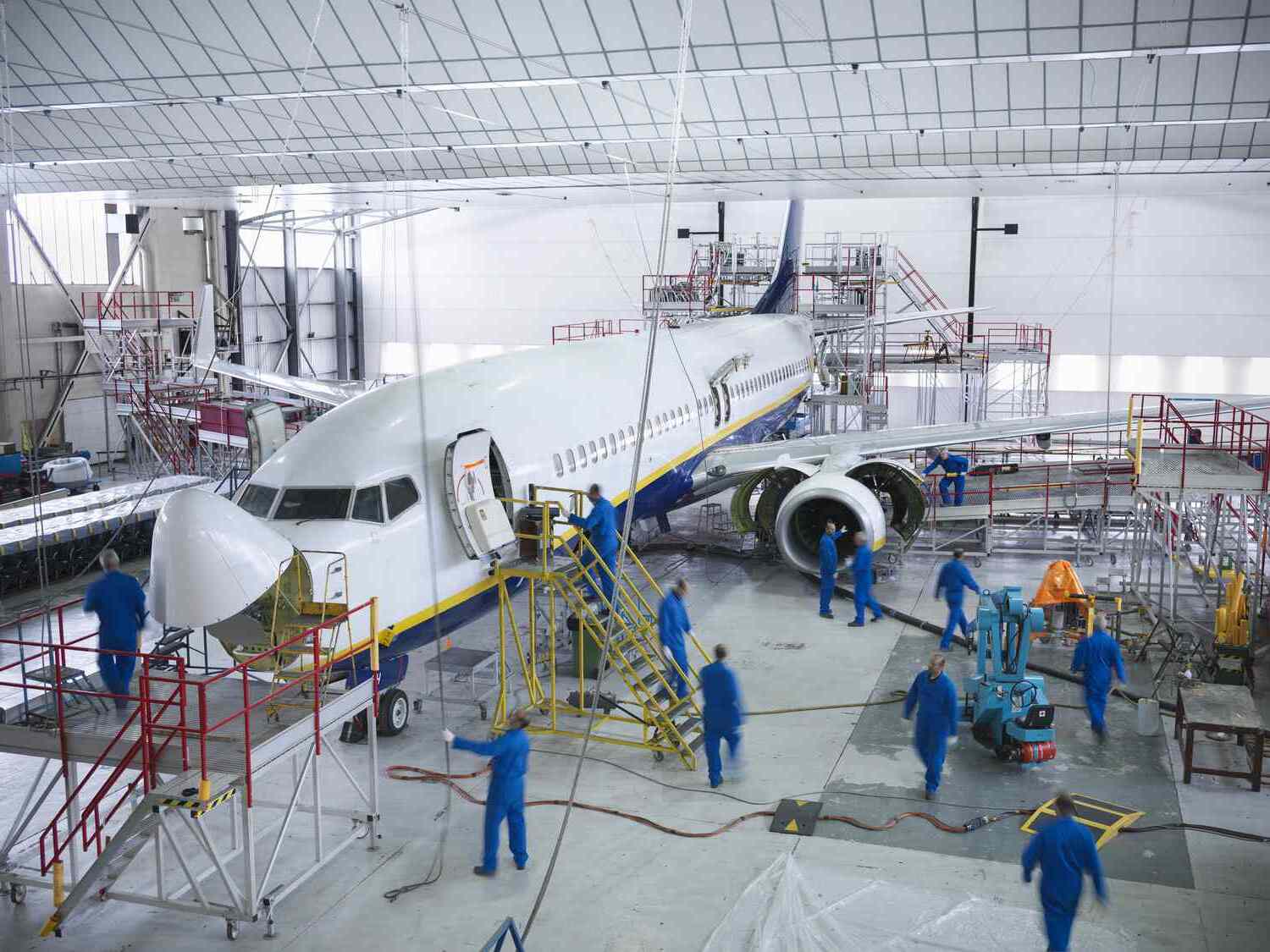
How are aircraft manufactured? Aircraft manufacturing is a complex process involving thousands of parts and meticulous assembly. Aircraft manufacturers start with design and engineering, using advanced software to create detailed blueprints. Next, raw materials like aluminum and titanium are shaped into components. These parts are then assembled in massive factories, where precision is key. Workers use specialized tools and machines to ensure every piece fits perfectly. After assembly, rigorous testing ensures safety and performance. Finally, the aircraft undergoes painting and interior installation before it's ready for delivery. This intricate process combines cutting-edge technology with skilled craftsmanship to produce the flying marvels we see in the sky.
Key Takeaways:
- The history of aircraft manufacturing is filled with groundbreaking inventions, from the Wright brothers' first flight to the development of modern jets by Boeing.
- Aircraft manufacturing continues to evolve with advanced materials, innovative designs, and a focus on safety, paving the way for eco-friendly and autonomous aircraft in the future.
The Birth of Aircraft Manufacturing
Aircraft manufacturing has a rich history filled with innovation and technological advancements. From the Wright brothers' first flight to modern-day jets, the journey has been remarkable.
-
The Wright brothers built the first successful powered aircraft in 1903. Their Flyer I took off from Kitty Hawk, North Carolina, marking the beginning of aviation history.
-
Boeing, one of the largest aircraft manufacturers, was founded in 1916. It started with seaplanes and has since evolved into a global aerospace leader.
Materials Used in Aircraft Manufacturing
The materials used in building aircraft have evolved significantly over the years. Early planes were made of wood and fabric, but modern aircraft use advanced materials for better performance and safety.
-
Aluminum became the primary material for aircraft construction in the 1930s. It is lightweight yet strong, making it ideal for aviation.
-
Composite materials, like carbon fiber, are now widely used. These materials are even lighter than aluminum and offer superior strength and durability.
Innovations in Aircraft Design
Aircraft design has seen numerous innovations aimed at improving efficiency, safety, and passenger comfort. These advancements have transformed the way we travel.
-
The introduction of jet engines in the 1940s revolutionized air travel. Jets are faster and more efficient than propeller-driven planes.
-
Fly-by-wire technology, which replaces traditional manual flight controls with electronic systems, enhances safety and performance. This technology is now standard in modern aircraft.
The Role of Aerodynamics
Aerodynamics plays a crucial role in aircraft design. Understanding how air flows over the wings and body of an aircraft is essential for optimizing performance.
-
Winglets, the vertical extensions at the tips of wings, reduce drag and improve fuel efficiency. They are a common feature on modern jets.
-
Supercritical wings, designed to delay the onset of shock waves at high speeds, enhance the performance of supersonic aircraft.
The Importance of Safety in Aircraft Manufacturing
Safety is paramount in aircraft manufacturing. Rigorous testing and strict regulations ensure that every aircraft meets the highest safety standards.
-
Aircraft undergo extensive testing, including wind tunnel tests and flight simulations. These tests help identify and address potential issues before the aircraft enters service.
-
The Federal Aviation Administration (FAA) and other regulatory bodies set stringent safety standards. Manufacturers must comply with these regulations to ensure the safety of passengers and crew.
The Future of Aircraft Manufacturing
The future of aircraft manufacturing looks promising, with new technologies and innovations on the horizon. These advancements aim to make air travel more efficient, sustainable, and enjoyable.
-
Electric and hybrid-electric aircraft are being developed to reduce carbon emissions. These eco-friendly planes could revolutionize the aviation industry.
-
Autonomous aircraft, capable of flying without human pilots, are being tested. While still in the experimental stage, they hold the potential to transform air travel in the coming decades.
Final Takeaways on Aircraft Manufacturing
Aircraft manufacturing is a fascinating blend of engineering, innovation, and precision. From the first flight by the Wright brothers to today's advanced jets, the industry has come a long way. Materials like aluminum and carbon fiber make planes lighter and stronger. Automation and robotics streamline production, ensuring safety and efficiency. Environmental concerns push manufacturers to create more fuel-efficient and eco-friendly designs. Global collaboration means parts come from all over the world, making the process truly international. Regulations ensure every aircraft meets strict safety standards. Technology like 3D printing and AI continues to revolutionize the field. Understanding these facts gives a deeper appreciation for the complexity and ingenuity behind every aircraft. Next time you board a plane, remember the incredible journey it took to get there. The sky's the limit for future advancements in this ever-evolving industry.
Frequently Asked Questions
Was this page helpful?
Our commitment to delivering trustworthy and engaging content is at the heart of what we do. Each fact on our site is contributed by real users like you, bringing a wealth of diverse insights and information. To ensure the highest standards of accuracy and reliability, our dedicated editors meticulously review each submission. This process guarantees that the facts we share are not only fascinating but also credible. Trust in our commitment to quality and authenticity as you explore and learn with us.


